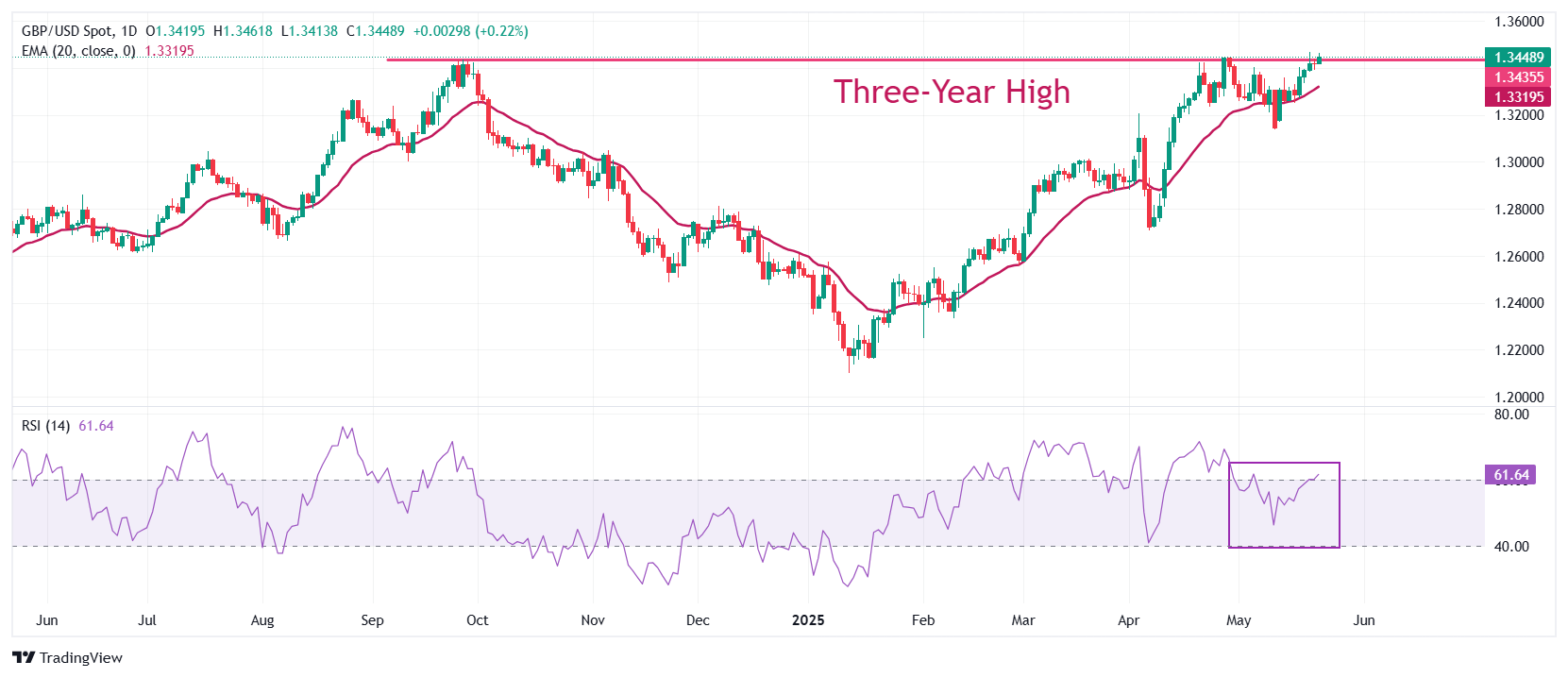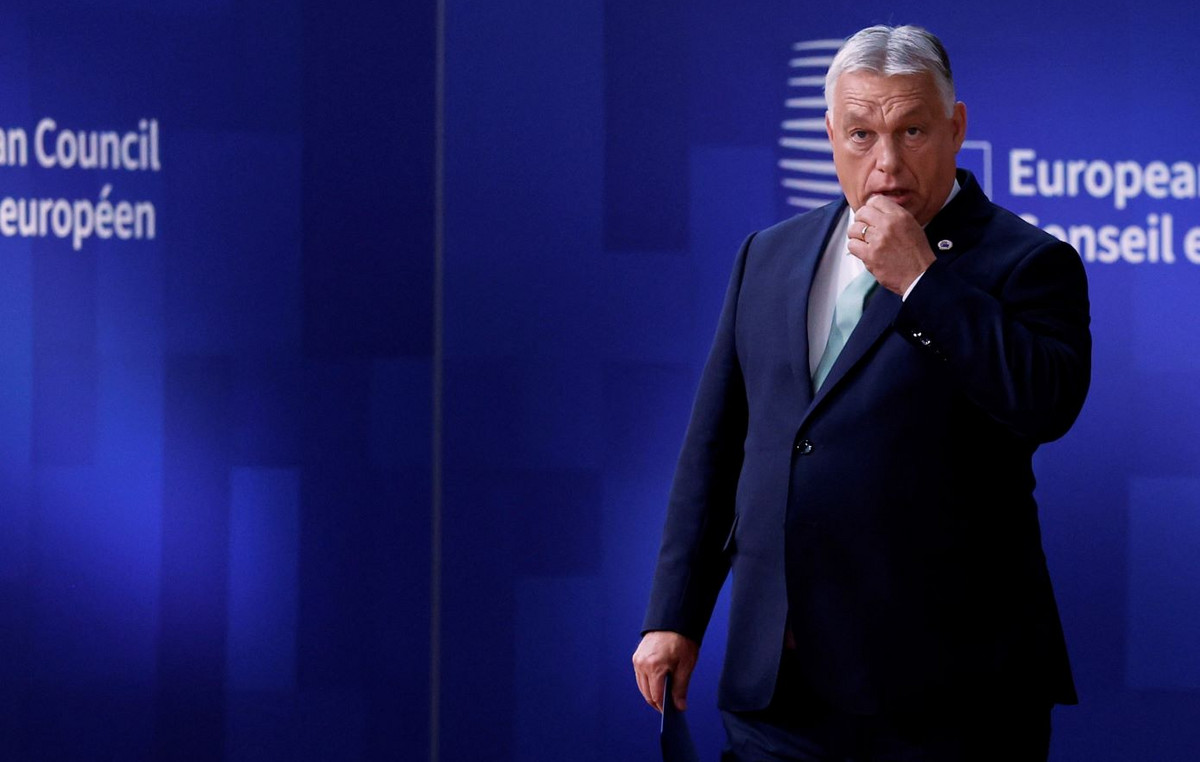- The sterling pound advances with force against the US dollar thanks to the solid retail sales data of the United Kingdom for April.
- Retail sales from the United Kingdom grew by 1.2% monthly.
- The new bill of US President Trump advances to the Senate after being approved in the House of Representatives.
The sterling pound (GBP) revisits the maximum of three years against the US dollar (USD), which reached around 1,3470 earlier this week, in the European negotiation hours on Friday. The British currency is strengthened after the publication of retail sales data from the United Kingdom for April that exceeded the projections.
The National Statistics Office (ONS) reported that retail sales, a key measure of consumer spending, increased at a robust rate of 1.2% in the month, compared to estimates of 0.2% and the growth of 0.1% observed in March, decreased down from 0.4%. In interannual terms, the measure of consumer spending grew 5%, faster than the expectations of 4.5%and the previous publication of 2.6%.
According to the retail sales report, food stores, department stores and home items saw a substantial increase in sales receipts.
The signs of a solid spending of households are expected to increase even more expectations that Bank of England (BOE) will not reduce interest rates at the June meeting. This week, the data of the United Kingdom Consumer Price Index (ICC) for April, higher than expected, also forced the operators to reduce Dovish Boe’s bets.
Meanwhile, the preliminary data of the purchasing managers index (PMI) of the United Kingdom Global S&P for May came better than expected. However, the general business activity continued to contract, since the compound PMI improved 49.4, compared to estimates of 49.3 and since 48.5 in April. The general business activity decreased at a slower pace due to a robust increase in the production of the services sector. The PMI of services stood at 50.2, above the expectations of 50.0 and the previous publication of 49.0. Meanwhile, the manufacturing PMI fell at a faster rate to 45.1 from 45.4 in April, below the expected 46.
What moves the market today: the pound sterling lies upwards against the US dollar
- The sterling pound exceeds the US dollar on Friday thanks to optimistic retail sales data of the United Kingdom. Meanwhile, the growing concerns about the fiscal imbalances of the United States (USA) have also kept the US dollar defensive. The US dollar index (DXY), which tracks the value of the dollar against six main currencies, falls to about 99.65.
- The participants of the financial market are concerned that the new bill of US President Donald Trump, which includes tax cuts, increased defense and border control, cuts in the Medicaid program and green energy subsidies, is expected to worsen the already overloaded fiscal deficit.
- According to the Congress Budget Office, a non -partisan agency, the new Trump bill would increase US debt by 3.8 billion dollars during the next decade, which is currently 36.2 billion dollars. Such a scenario would further damage the sovereign credit rating of the US, which was already reduced by Moody’s to AA1 since AAA last week.
- President Trump’s new bill has been approved by the House of Representatives controlled by Republicans and advances to the Senate, where significant objections are expected to face. “I hope there are considerable changes in the Senate,” said Republican Senator Ted Cruz de Texas, according to Reuters.
- In the front of monetary policy, Federal Reserve officials (FED) are expected to continue arguing in favor of maintaining interest rates in their current range of 4.25% -4.50% for a longer time, since Trump’s tax bill could be another trigger for high inflation in the economy. Those responsible for politics have already recognized that patience is required in the midst of unusually high uncertainty after the new economic policies announced by US President Trump.
Technical analysis: The pound sterling is firmly traded by the maximum of three years of 1,3470

The sterling pound is traded by the maximum of three years of 1,3470 against the US dollar on Friday. The short -term trend of the GBP/USD torque remains a bullish since the 20 -day exponential mobile average (EMA) has an ascending slope around 1,3320.
The 14 -day relative force (RSI) index exceeds 60.00. If the RSI remains above that level, a new bullish impulse will be triggered.
On the positive side, the maximum of January 13, 2022 of 1,3750 will be a key obstacle to the pair. Looking down, the 20 -day EMA about 1,3320 will act as an important support area.
LIBRA ESTERLINA FAQS
The sterling pound (GBP) is the oldest currency in the world (886 AD) and the official currency of the United Kingdom. It is the fourth most commercialized currency exchange unit (FX) in the world, representing 12% of all transactions, with an average of $ 630 billion a day, according to data from 2022. Its key commercial peers are GBP/USD, which represents 11% of FX, GBP/JPY (3%) and EUR/GBP (2%). The sterling pound is issued by the Bank of England (BOE).
The most important factor that influences the value of sterling pound is the monetary policy decided by the Bank of England. The Bank of England bases its decisions itself has achieved its main objective of “price stability”: a constant inflation rate of around 2%. Its main tool to achieve this is the adjustment of interest rates. When inflation is too high, the Bank of England will try to control it by raising interest rates, which makes access to credit for people and companies more expensive. This is generally positive for sterling pound, since higher interest rates make the United Kingdom a more attractive place for global investors to invest their money. When inflation falls too much it is a sign that economic growth is slowing down. In this scenario, the Bank of England will consider lowering interest rates to reduce credit, so that companies will borrow more to invest in projects that generate growth.
Published data measure the health of the economy and can affect the value of sterling pound. Indicators such as GDP, manufacturing and services PMI and employment can influence the direction of the sterling pound.
Another important fact that is published and affects the pound sterling is the commercial balance. This indicator measures the difference between what a country earns with its exports and what you spend on imports during a given period. If a country produces highly demanded export products, its currency will benefit exclusively from the additional demand created by foreign buyers seeking to buy those goods. Therefore, a positive net trade balance strengthens a currency and vice versa in the case of a negative balance
Source: Fx Street
I am Joshua Winder, a senior-level journalist and editor at World Stock Market. I specialize in covering news related to the stock market and economic trends. With more than 8 years of experience in this field, I have become an expert in financial reporting.







